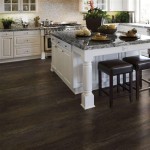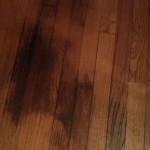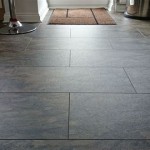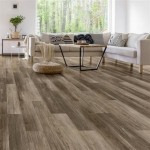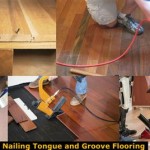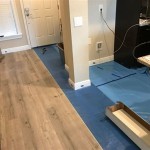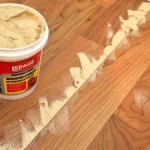If you have a hardwood floor that has been damaged by a dent or a scratch, you may be wondering what your options are for repairing it. Unfortunately, there isn’t a one-size-fits-all solution when it comes to fixing a dent in a hardwood floor. There are several methods available, and the best approach will depend on the specific damage and the type of flooring you have.
Reversing the Dent
If the dent is shallow and the wood is still in good condition, you may be able to reverse the dent by using a few simple tools. First, use a damp cloth to wet the area around the dent. Then, use a steam iron on a low setting and apply it to the area for a few minutes. The steam should cause the wood to swell slightly and help to reduce the dent.
Replacing Damaged Planks
If the dent is too deep to be reversed, or if the wood is badly damaged, you may need to replace the affected planks. It’s best to use planks from the same batch as the existing flooring, as this will ensure the color and grain match up. If this isn’t possible, you can also use a wood filler to help match the color and grain of the existing flooring.
Sanding and Refinishing
If the dent is in an area that can’t be replaced, or if the existing planks are heavily scratched, you may need to sand and refinish the entire floor. This process involves sanding down the entire surface with a power sander, then staining and applying a protective finish. This can be a time-consuming and expensive process, so it’s best to use this as a last resort.
Repairing Gouges and Cracks
If the dent is accompanied by a crack or a gouge, you may need to use a wood filler to repair the damage. Make sure to choose a wood filler that is compatible with your flooring, and follow the manufacturer’s instructions for application. Once the filler has dried, you can sand it down and refinish the area to match the existing flooring.
Preventing Future Damage
Once you’ve repaired the dent, it’s important to take steps to prevent future damage. Place felt pads under furniture legs and use rugs and mats in high-traffic areas to minimize the possibility of scratches and dents. You should also avoid dragging furniture across the floor, as this can cause additional damage.
Conclusion
Dents and scratches in hardwood floors can be an eyesore, but they don’t have to be permanent. With the right tools and materials, you can repair the damage and restore the look of your flooring. There are several different methods available, so it’s important to choose the best approach for the type of damage you have.














:no_upscale()/cdn.vox-cdn.com/uploads/chorus_asset/file/19617423/patch_wood_floor.jpg)
Related Posts

